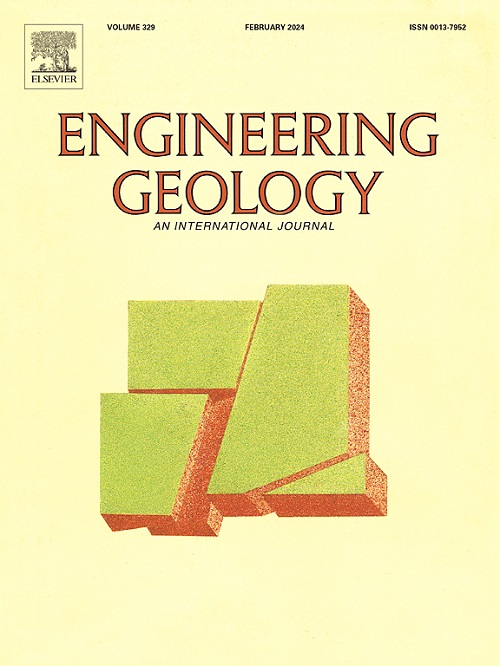3D modelling of rock mass heterogeneities in unsaturated karst using geophysics, clustering and geostatistics
IF 6.9
1区 工程技术
Q1 ENGINEERING, GEOLOGICAL
引用次数: 0
Abstract
Conserving an underground heritage site in a karst environment poses significant challenges because of the complexity of the physical phenomena involved. The deterioration of cave walls is mainly caused by condensation and infiltration, which originates from the thermal behaviour of the cave and the surrounding rock mass. This phenomenon is difficult to describe because it depends on the heterogeneity and water content of the unsaturated rock mass. However, it is clear that the conservation of cave art is a matter of concern for all caves worldwide. The purpose of this study is to analyse the heterogeneities surrounding Lascaux Cave and identify those which are water-saturated (during the wet season) that could significantly influence the cave thermally. The rock mass was characterised using the non-destructive 2D electrical resistivity tomography (ERT) method. Before kriging the ERT data, Hierarchical Agglomerative Clustering (HAC) was performed on the dataset. This classification provides class boundaries for categorising the kriging-estimated resistivities. The results of this study significantly improve our understanding of rock mass from geological and hydrogeological perspectives. The creation of a 3D model helped to identify four areas of lower resistivity (water storage reservoirs), indicating the possible presence of water as the rock mass was partially saturated. Those water storage reservoirs coincide with the water flows recorded during wet periods inside the cave and are associated with known geological fractures. Moreover, identifying the different materials surrounding the cave and the saturated areas in the 3D model allows us to understand the deviations in the temperature measurements in different parts of the cave and will improve the accuracy of the heat transfer simulations.

非饱和岩溶岩体非均质性的地球物理、聚类和地质统计学三维建模
由于所涉及的物理现象的复杂性,保护喀斯特环境中的地下遗址面临着巨大的挑战。溶洞壁的劣化主要是由溶洞和围岩的热特性引起的凝结和入渗。这种现象很难描述,因为它取决于非饱和岩体的非均质性和含水量。然而,很明显,洞穴艺术的保护是全世界所有洞穴都关心的问题。本研究的目的是分析拉斯科洞穴周围的非均质性,并确定那些(在雨季)可能显著影响洞穴热的水饱和。采用非破坏性二维电阻率层析成像(ERT)方法对岩体进行了表征。在提取ERT数据之前,对数据集进行层次聚类(HAC)。这种分类为克里格估计电阻率的分类提供了类别边界。这一研究结果大大提高了我们从地质和水文地质角度对岩体的认识。3D模型的创建有助于识别四个电阻率较低的区域(蓄水层),表明由于岩体部分饱和,可能存在水。这些储水水库与洞穴内潮湿时期记录的水流相吻合,并与已知的地质裂缝有关。此外,在三维模型中识别洞穴周围的不同材料和饱和区域可以让我们了解洞穴不同部位温度测量的偏差,从而提高传热模拟的准确性。
本文章由计算机程序翻译,如有差异,请以英文原文为准。
求助全文
约1分钟内获得全文
求助全文
来源期刊

Engineering Geology
地学-地球科学综合
CiteScore
13.70
自引率
12.20%
发文量
327
审稿时长
5.6 months
期刊介绍:
Engineering Geology, an international interdisciplinary journal, serves as a bridge between earth sciences and engineering, focusing on geological and geotechnical engineering. It welcomes studies with relevance to engineering, environmental concerns, and safety, catering to engineering geologists with backgrounds in geology or civil/mining engineering. Topics include applied geomorphology, structural geology, geophysics, geochemistry, environmental geology, hydrogeology, land use planning, natural hazards, remote sensing, soil and rock mechanics, and applied geotechnical engineering. The journal provides a platform for research at the intersection of geology and engineering disciplines.
 求助内容:
求助内容: 应助结果提醒方式:
应助结果提醒方式:


